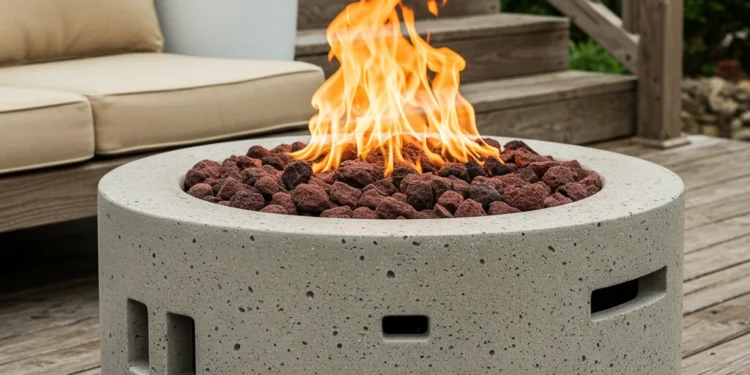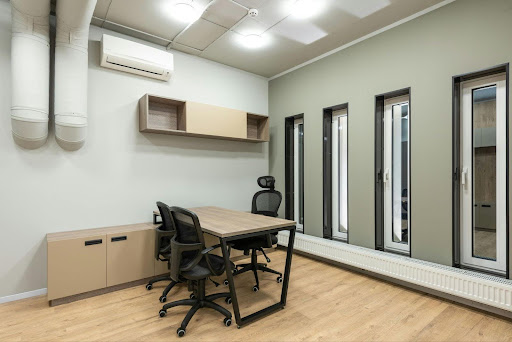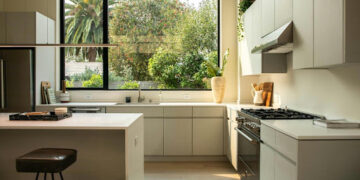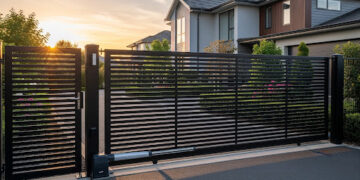Cold weather does not have to end outdoor gatherings. A fire table can create warmth and comfort while also serving as a centerpiece for conversation. The best fire table options for winter gatherings are those with strong heat output, durable materials, and easy-to-use ignition systems. These features make the difference between a chilly evening outside and a cozy, enjoyable night.
Different fuel types, designs, and sizes give people the flexibility to match a fire table to their space and style. Some models use propane for convenience, while others connect to natural gas for steady heat through the season. Materials like aluminum, stainless steel, or concrete hold up well in harsh conditions, making them smart choices for long-term use.
Safety and control also matter during colder months. Adjustable flame settings, automatic shut-off features, and protective finishes allow a fire table to perform well while keeping the space safe. With the right choice, a backyard or patio can stay inviting all winter long.
Top Fire Table Options for Winter Gatherings
Different fire table designs suit different needs in colder months. Some provide a traditional flame with wood, while others use propane or natural gas for convenience. Smokeless models reduce cleanup, and smaller tabletop versions work well in compact spaces.
Gas Fire Tables
Gas fire tables use propane or natural gas, delivering consistent flames with easy ignition. They often produce higher heat output, with burners rated between 40,000 and 50,000 BTUs, which makes them suitable for colder winter nights.
Many models feature hidden tank storage, keeping the setup neat and uncluttered. Adjustable flame control allows users to set the right level of heat and ambiance. Compared to wood-burning versions, gas fire tables require less cleanup and no ash disposal.
They come in a wide range of styles, from sleek aluminum frames to stone finishes. Homeowners looking for stylish backyard fire tables can find many options in fire tables for every style. These designs often double as outdoor dining or coffee tables, making them practical throughout the year.
Wood-Burning Fire Tables
Wood-burning fire tables create a traditional campfire feel with natural flames and the crackle of burning logs. They often cost less upfront compared to gas models, but they require more attention to fuel and ash cleanup.
These tables usually work best in open backyards where smoke can rise freely. Many include spark screens and fire pokers for safety. Some designs also double as grills or ice buckets, giving them extra utility during outdoor gatherings.
However, wood-burning models demand dry firewood, which means owners must plan ahead. They also produce smoke, which might not suit smaller patios or areas with close neighbors. For those who want an authentic fire experience, though, they remain a classic option.
Smokeless Fire Tables
Smokeless fire tables reduce the smoke output by improving airflow and combustion. This design allows people to sit closer to the flame without irritation from smoke drift. They also leave behind less residue, which simplifies maintenance.
These models often use wood or pellets as fuel, but burn them more efficiently than traditional pits. As a result, they work well in backyards where air quality or neighbor comfort is a concern.
The heat output remains strong, making them a solid choice for winter gatherings. However, they usually cost more than standard wood-burning tables, and fuel options may be more limited. For those who want a cleaner burn, they provide a practical balance.
Tabletop Fire Tables
Tabletop fire tables provide a compact option for patios, decks, or smaller outdoor spaces. They often run on small propane tanks, making them easy to set up and move.
These models do not produce as much heat as larger fire tables, but they create a cozy flame for intimate settings. Many include auto-ignition controls, which make lighting the flame quick and simple.
Their size also allows them to double as serving tables during the day. While they may not warm large groups in freezing weather, they work well for casual use and smaller gatherings. For those with limited space, tabletop fire tables offer a practical solution.
Key Considerations When Choosing a Fire Table
The best fire table depends on material strength, ease of placement, safety design, and long-term care. Each of these factors affects how well the table performs in cold weather and how practical it is for daily use.
Material and Durability
The choice of material directly affects how long a fire table lasts outdoors. Stainless steel resists rust and handles moisture well, making it a strong option for winter climates. Powder-coated aluminum also holds up against corrosion, while concrete provides weight and stability but may crack if exposed to freezing temperatures without protection.
Cast iron and steel fire pits offer durability but can rust if not covered or treated. A copper fire pit creates a warm, classic look, though it requires polishing to prevent a dull surface. Poly lumber tables with built-in fire features resist fading and do not splinter, which makes them practical for year-round use.
Homeowners should match materials to the climate. For example, stainless steel or poly lumber works well in wet or snowy regions, while stone or concrete suits mild areas with less freeze-thaw stress. Durability should balance both appearance and seasonal performance.
Portability and Placement
A portable fire pit table gives flexibility for different layouts or gatherings. Lightweight steel or aluminum tables can be moved to different spots, while heavier stone or concrete models stay fixed. Portability matters for small patios or renters who cannot install permanent fixtures.
Placement also affects safety and comfort. Fire tables should sit on level, non-flammable surfaces such as stone, tile, or concrete. Positioning away from walls, fences, or overhanging branches reduces fire risk. For dining areas, rectangular fire tables often fit better, while round tables encourage conversation in lounge spaces.
Some designs include hidden storage for propane tanks, which helps with both placement and appearance. In contrast, wood-burning fire pits need more clearance because they produce sparks and smoke. Choosing the right spot makes the table more functional and safer to use.
Safety Features and Regulations
Modern fire tables include built-in safety elements that make them easier to control. Propane and natural gas models often feature automatic shut-off valves, adjustable flame controls, and wind guards. These reduce the chance of flare-ups and help maintain steady heat output.
Local regulations may restrict wood-burning fire pits due to smoke and embers. Gas-powered tables usually meet stricter codes, making them suitable for more residential areas. Certification labels such as UL or CE indicate that the components meet tested safety standards.
Users should also consider child and pet safety. Taller tables keep flames out of reach, while tempered glass surrounds add a protective barrier. Following manufacturer guidelines and local fire codes creates a safer environment for gatherings.
Maintenance and Seasonal Care
Proper upkeep extends the life of a fire table. Gas models require regular checks of burners, hoses, and ignition systems to prevent leaks. Ash and soot buildup from wood-burning fire pits should be cleared after each use to avoid blockages and staining.
Covers protect surfaces from snow, rain, and UV damage. In colder regions, storing portable fire pits indoors during harsh months prevents cracking or rust. Copper fire pits may need polishing or a protective wax to maintain their finish, while poly lumber surfaces only need occasional cleaning with soap and water.
Seasonal care also includes checking fuel supplies. Propane tanks should be stored upright in a dry location, while natural gas connections need inspection before winter use. Consistent maintenance not only keeps the fire table looking good but also supports safe operation year after year.
Conclusion
Fire tables with higher BTU ratings provide the most warmth for cold-weather gatherings, especially models in the 40,000–60,000 BTU range. This level of output helps keep outdoor spaces comfortable even in freezing conditions.
Durable materials such as stainless steel, aluminum, and concrete hold up better against snow and ice. Protective covers and wind guards also extend the life of the table and improve heat efficiency.
Fuel choice matters as well. Propane offers flexibility, while natural gas delivers steady heat without tank changes. Each option works best depending on the space and setup.
By focusing on heat output, material strength, and fuel type, people can select a fire table that keeps patios inviting throughout the winter season.












